Brendan Rodgers's and Jose Mourinho's sides had been experiencing very different fortunes over the first quarter of the season. Unbeaten and on 26 points in the league, Chelsea went into the game at Anfield four points clear of Southampton, their closest competitor.
The same success couldn't be celebrated at Liverpool, The Reds down in seventh on 14 points at the start of play, 12 behind Chelsea. Goals have been Liverpool's problem, a mere 13 scored in ten league games - their goal difference showing a well-rounded zero. The Merseyside team had won just one of their last five games across all competitions.
Rumours prior to the game suggested that Daniel Sturridge would play some part in this game and potentially provide an answer for the lack of goals. However, the striker remained on the injury list and played no part in events.
Defenders Jon Flanagan, Mamadou Sakho and Jose Enrique were also ruled out through injury.
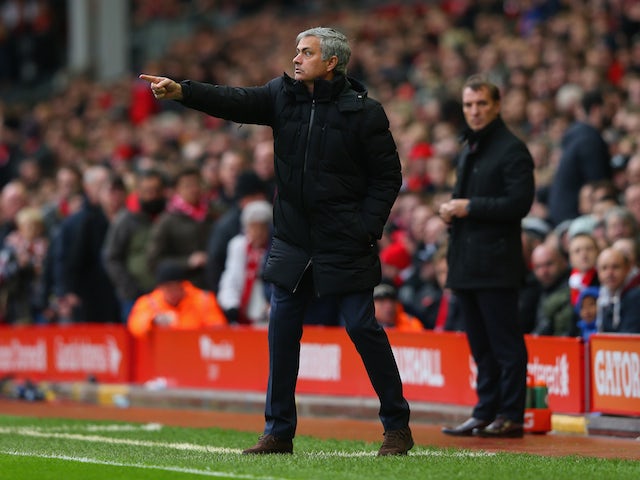 © Getty Images
© Getty Images
Chelsea welcomed the return of Cesar Azpilicueta, who started at left full back in place of Filipe Luis. Loic Remy had recovered fully enough from injury to be given a spot on the bench, but Jon Obi Mikel continued to be ruled out thanks to a knee problem that saw him miss the last Premier League game against QPR.
Both teams played drastically altered lineups than they had in their previous games. Rodgers made seven changes to the 11 that started against Real Madrid in the Champions League in midweek, popular belief suggesting that he had rested key players at the Santiago Bernabeu specifically with a view to facing Chelsea.
Chelsea made six changes of their our own to the team that started the Champions League game with Maribor.
Neither team, then, could complain too much about players being tired and/or overworked.
Liverpool Dominate the Middle During First Half
Cesc Fabregas and Nemanja Matic took up their usual partnership in the centre of Chelsea's midfield, although the structure in place around them was somewhat different than normal. Possibly in fear of Liverpool's potential to overlap down their right hand side with Alberto Moreno and Raheem Sterling, Mourinho employed Ramires in front of full back Branislav Ivanovic to offer extra protection.
This isn't the first time Chelsea had used a defensively-minded player in a traditionally offensive role, doing exactly in the same in the 2012 Champions League final versus Bayern Munich with Ryan Bertrand on the left wing in front of Ashley Cole to protect against the Arjen Robben/Philip Lahm threat.
Bertrand's involvement came under the short premiership of Roberto Di Matteo, but the idea is exactly the same here.
However, the concept displayed immediate flaws once Liverpool had showed their hand and revealed how they were setting out to pass, move and attack. Emre Can, Steven Gerrard, Philippe Coutinho and Jordan Henderson all played incredibly narrow, sticking doggedly to central areas in a bid to overload the formidable pairing of Fabregas and Matic.
The success of Liverpool's plan resulted in near-complete domination of the midfield area just inside Chelsea's own half, the effect exaggerated by Mourinho's instructions for his team to only fight for possession inside their own half. This is the classic approach for teams hoping to operate on the counter-attack.
Fabregas and Matic, however, simply couldn't contain the Liverpool threat - not only because of the wealth of numbers, but because of the incredibly direct approach adopted by Henderson, Coutinho and Can. With so many players to contend with, Chelsea's players found themselves pulled in and out of position constantly - muting the likes of Oscar and Eden Hazard's ability to assist in defensive duties.
Indeed, Liverpool were content to simply keep their heads down and run straight at Chelsea's defensive lines as soon as they had possession in the attacking half. Time, therefore, was not a luxury Chelsea had when they were without the ball. This is visualised perfectly in Can's goal.
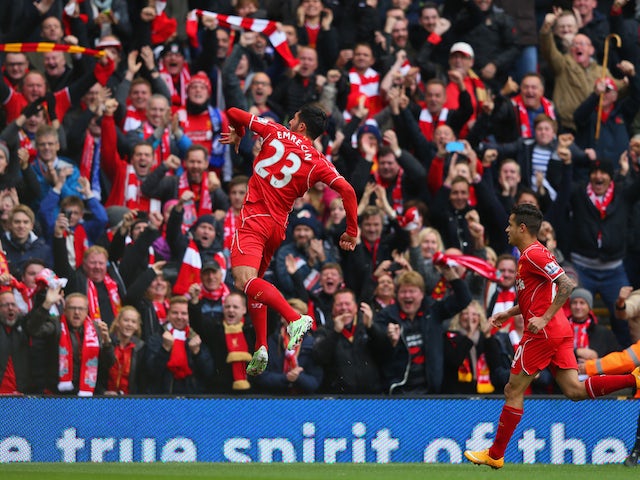 © Getty Images
© Getty Images
With Chelsea peeling off to make sure forward runners are marked and the threat from the flanks is neutralised (Sterling usually acting as a decoy to prevent Ramires from drifting inside and assisting in defending the middle), Can saw the pitch open up in front of him and launched a shot from outside of the box that eventually found its way to the net via a Gary Cahill deflection.
Fabregas was in the correct position to shut down the run, but the ease at which Can brushed by him highlights the Chelsea player's limitations in defensive situations. With Matic otherwise occupied, the middle seemed all but open despite Fabregas' existence. Isolating Fabregas will surely become a primary tactic for other teams going forward.
Chelsea Change Tempo and Control Game
Gary Cahill's equaliser came in the 13th minute, just five minutes after Can's strike. Liverpool failed to take command of corners throughout the entire match, making the nature of the goal entirely predictable in hindsight.
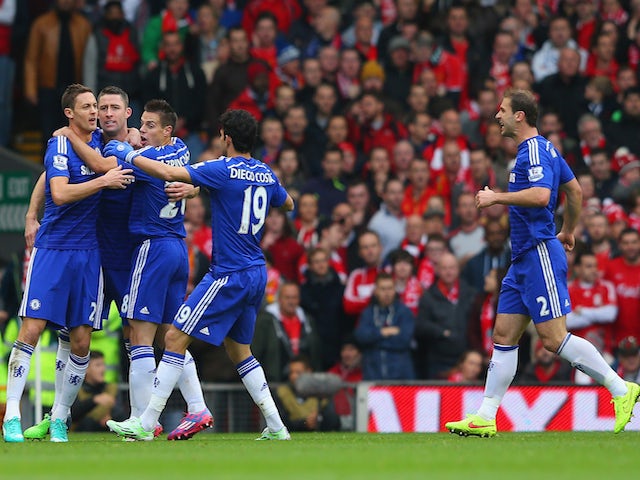 © Getty Images
© Getty Images
Chelsea managed to get three near-unchallenged touches on the ball from the cross, Liverpool's defensive unit doing little to nothing to slow down or obstruct the attackers' movement.
Following the goal, the flow of the game continued as it had done up until that point. Chelsea continued to defend exclusively from within their own half, Liverpool enjoying further success through the middle of the pitch. This continued until roughly the 35th minute, at which time Mourinho instructed his team to enforce themselves much more aggressively on the game.
From this point forward Liverpool never recovered and never looked like scoring a second goal. They will regret not making more of their dominance over the opening half hour.
Chelsea stepped up the pressure by pressing much higher up the field, disrupting Liverpool's passing game by preventing centre-backs Martin Skrtel and Dejan Lovren having the time required to get the ball into the feet of Gerrard, Henderson and Can.
This had two beneficial effects. Firstly, the ball found its way far more often to Moreno on Liverpool's left. This played very much into the hands of Ramires, the Brazilian doing a wonderful job of stifling Moreno's forward runs and preventing him from linking him up with Sterling along the touchline.
Additionally, the pressure forced Gerrard to drop far deeper when Liverpool had in an attempt to take control of the back line's attacking responsibilities and spray the ball about the pitch. While Gerrard has playing this role to varying degrees of success this season and last, it was not what the midfielder had been doing earlier in the game. The change stifled much of Liverpool's central threat.
Gerrard's mere presence higher up the field had forced Chelsea to play more conservatively and try to employ a more rigid defensive structure. By defending from the front the likes of Eden Hazard, Oscar and Diego Costa had removed Gerrard's attacking threat and this allowed Fabregas and Matic to more easily take control of the situation.
It was during this period, too, with Liverpool more prone to giving away possession cheaply and in dangerous areas, that Hazard came into his own. Chelsea tended to overload down their right hand side, in part a result of them winning the ball back so often from Liverpool's attempts to drive down that channel.
 © Getty Images
© Getty Images
This meant their entire formation was positioned right of centre, giving Hazard licence to hold a starting position much further infield than he would usually do. With him, Oscar and Costa launching attacks from within the outer edges of Liverpool's box, the London club looked dangerous on almost every attack. A second goal was almost inevitable.
Rodgers Changes Everything With 25 Minutes To Go
With play so obviously bunched up down Liverpool's left-hand side, it came as no surprise to see space eventually exploited down their right. For Chelsea's second goal Glen Johnson had shuffled inside so far in order to provide cover for his centre-backs that the entire right-hand side of his own half was left free.
When play was switched across flanks and into the feet of Azpilicueta on Chelsea's left, it fell to Coutinho to slow him and win back possession - the Brazilian being the only player anywhere near him. Unfortunately for Liverpool, Coutinho failed entirely in halting Azpilicueta's progress and the Spaniard managed to drill in a low cross from a dangerous area.
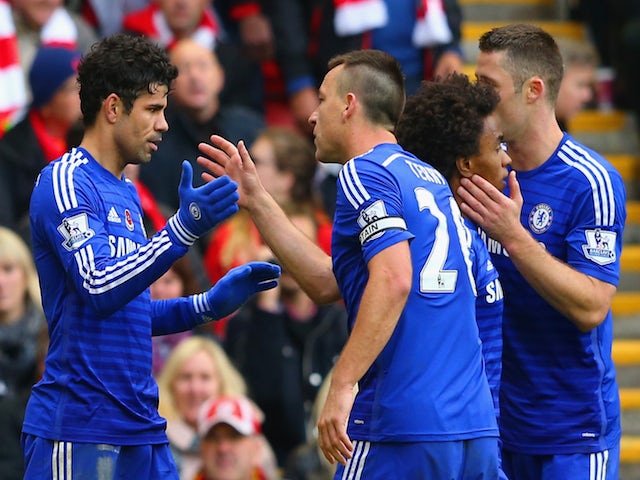 © Getty Images
© Getty Images
The cross was deflected by Simon Mignolet, landing at the feet of a wonderfully-positioned Costa who obliged the chance with a goal.
What's disturbing from a Liverpool perspective is not that Azpilicueta beat Coutinho so readily - the latter never having shown much in the way of defensive ability - but from the fact that none of the four defenders in the box at the time of the cross seemed to have any idea regarding Costa's position. Each and every one of them was looking towards Azpilicueta and the ball, not one was checking the run of Costa... or any other Chelsea player that might have potentially made their way into a compromising area of the field.
Two minutes later Rodgers took off the hardworking (but increasingly ineffective) Can, along with Coutinho, in place of Joe Allen and Fabio Borini. Their introduction saw Liverpool adopt an orthodox 4-4-2, with Henderson pushed out to the right and Sterling on the left. Borini joined Balotelli up front and Gerrard/Allen occupied the middle.
While the plan worked to secure more possession in wide areas - not least because Borini worked hard to get out towards the touchline wherever and create more diversions for Sterling - Chelsea had already reverted to a more defensive system in an attempt to see the game out.
Just as they had against Manchester United two weeks ago, Chelsea set about defending a one-goal lead by greatly increasing the frequency of passes between their defenders and being happy to soak up pressure by dropping deep.
Rodgers might have had better success switching to 4-4-2 prior to Chelsea's second goal, the horizontal stretching of play perhaps working to unsettle the Fabregas/Matic partnership that had become increasingly dominate in the second half.
Terry and Cahill Demonstrate Enviable Solidarity
Balotelli, in defiance of accusations thrown his away regarding a lack of work rate and an inability to fully grasp tactically concepts, was tireless in his efforts during the first half. The Italian striker frequently dropped deep into midfield in an attempt to draw Chelsea's defenders out of position and create room for the advancing Can and Henderson.
Additionally, he showed great aptitude in his ability to win back possession from Chelsea's midfielders.
What he didn't do, however, was fool the partnership of John Terry and Gary Cahill. Balotelli might have worked to grab the attentions of Matic to make space for Can's first half goal, but neither Terry or Cahill were tricked. Both defenders were positioned brilliantly to shield the goal from Can, only for Cahill to get unlucky when the ball deflected off of him and past Thibuat Courtois.
Once Liverpool had changed to a 4-4-2, the Terry/Cahill wall continued to hold strong and give away virtually no cheap space whatsoever. In fact, their seeming invincibility only increased in the second half as a result of Matic's improved performance - the midfielder already having disrupted Liverpool's ideal flow and pace before they could reach the backline.
The partnership was not only impressive from a positional sense, but also a physical one. Not a cross, corner or long ball into the box troubled them, the pair communicating effectively to the point where one of them was always attacking the ball while the other picked up the primary danger man in any given moment.
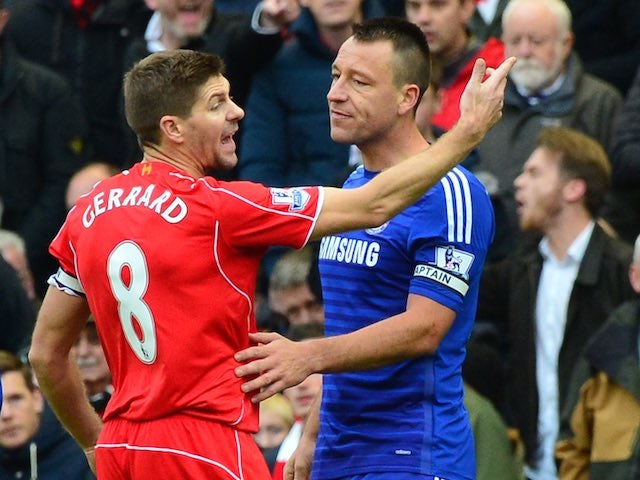 © AFP
© AFP
Chelsea's professionalism late in the game was epitomised by these two and their ability to remain calm and in control despite Liverpool's increased possession.
While Cahill undoubtedly handled the ball in the box in an effort to block Gerrard's shot, which should have been given as a penalty, the result was a fair one. Liverpool came out of the blocks flying and resultantly scored an early goal, but Chelsea's dominance in set-pieces, attacking movement and defensive awareness meant they were deserved winners.
Further, and unlike Liverpool, Chelsea demonstrated great ability to intelligently and effectively adapt to the different phases of the game. They changed tactic ruthlessly in a bid to take the lead, and do so again in an effort to retain it.
Mourinho might be many things, but accusations of one-dimensional football are well wide of the mark.







